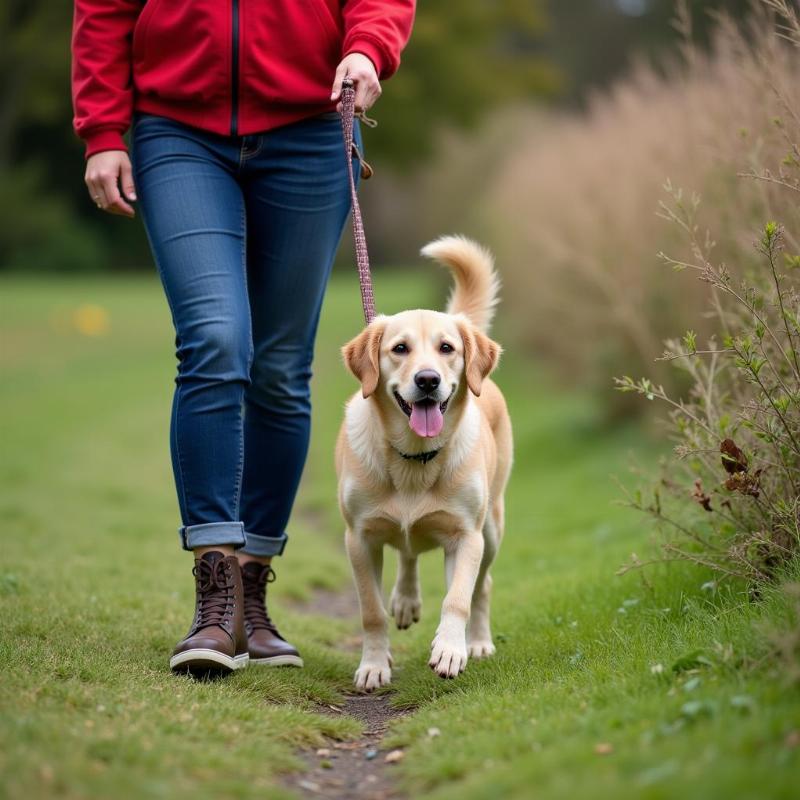Hedgehogs are adorable, prickly creatures, but their defense mechanism—curling into a ball of spines—raises a crucial question for dog owners: are hedge balls poisonous to dogs? The short answer is no, hedgehogs aren’t poisonous, but their spines can pose a significant threat to curious canines. This article will explore the dangers posed by hedgehogs to dogs, how to prevent interactions, and what to do if your dog gets quilled.
Understanding the Dangers of Hedgehogs to Dogs
While hedgehogs aren’t poisonous in the traditional sense, their quills—modified hairs made of keratin—can cause injury and infection. A curious dog might sniff or try to play with a hedgehog, resulting in a face full of quills. These quills can be painful, difficult to remove, and may lead to abscesses or other complications if left untreated. Furthermore, hedgehogs can carry parasites like fleas, ticks, and mites, which can be transmitted to your dog.
Preventing Hedgehog Encounters
The best way to protect your dog from hedgehog quills is to prevent encounters altogether. Keep your dog on a leash when walking in areas known to harbor hedgehogs, particularly during dusk and dawn when these nocturnal animals are most active. Secure your yard with fencing to prevent hedgehogs from entering. Regularly check your garden for hedgehogs, especially before letting your dog out to play. Educate your dog with commands like “leave it” to discourage interaction with wildlife.  Dog on Leash in Park
Dog on Leash in Park
What to Do if Your Dog Gets Quilled
If your dog does get quilled by a hedgehog, it’s crucial to remain calm and act quickly. Don’t attempt to pull the quills out yourself, as they can be brittle and break off, leaving fragments embedded in your dog’s skin. Instead, immediately contact your veterinarian. They have the tools and expertise to safely remove the quills and treat any resulting wounds or infections. Monitor your dog for signs of infection, such as swelling, redness, or discharge.
Hedgehog-Proofing Your Yard
Creating a hedgehog-friendly, yet dog-safe, environment is possible. Avoid using slug pellets or other pesticides that can harm hedgehogs. Provide a water source for hedgehogs, like a shallow dish of water. Consider designating a specific area of your yard as a “wildlife zone” where you encourage natural habitat and limit your dog’s access.
Recognizing the Signs of Quilling
Knowing the signs of quilling is crucial for prompt treatment. Your dog may paw at its face or mouth, whine, drool excessively, or exhibit a reduced appetite. Swelling and redness around the affected area are also common indicators.
“Prompt veterinary care is essential if your dog encounters a hedgehog,” advises Dr. Emily Carter, DVM, a veterinary specialist in small animal emergency medicine. “Attempting to remove quills at home can worsen the injury and increase the risk of infection.”
“Educating pet owners about potential wildlife hazards is a cornerstone of responsible pet ownership,” adds Dr. Sarah Miller, DVM, a certified canine behaviorist. “Teaching your dog to ‘leave it’ can be invaluable in preventing negative interactions with hedgehogs and other wildlife.”
Conclusion
While hedgehogs aren’t poisonous to dogs, their quills present a real danger. By taking preventative measures, understanding the signs of quilling, and knowing how to react in case of an encounter, you can keep your canine companion safe and happy.
FAQ
- Are hedgehogs poisonous to touch? No, hedgehogs are not poisonous to touch, but their quills can cause pain and injury.
- Can a dog die from hedgehog quills? While rare, serious complications from quilling, such as infection or quill migration, can be life-threatening if left untreated.
- How do I keep hedgehogs out of my yard? Secure fencing, removing attractants like food and water sources, and keeping your dog on a leash can help deter hedgehogs.
- What should I do if my dog eats a hedgehog? This is a serious situation. Immediately contact your veterinarian or an emergency animal hospital.
- Can hedgehogs transmit diseases to dogs? Yes, hedgehogs can carry parasites that can be transmitted to dogs.
- How long does it take for a quill wound to heal? Healing time varies depending on the severity of the quilling and the presence of infection.
- Are there any home remedies for removing quills? No, attempting to remove quills at home is strongly discouraged. Always consult a veterinarian.
Beautdogs.us is your premier online resource for comprehensive dog care information, breed insights, and top-quality product recommendations. Whether you’re a seasoned dog owner or just starting your journey, Beautdogs.us is dedicated to providing you with expert advice and helpful resources to ensure your furry friend thrives. We offer a wealth of information on everything from dog health and nutrition to training and behavior. Contact us today for personalized support and guidance! Email: [email protected], Phone: +1 501-555-7529. Visit Beautdogs.us for more information.